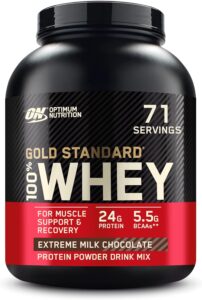
Tara Davis-Woodhall, born Tara Davis on May 20, 1998, in San Diego, California, is a renowned American track and field athlete specializing in the long jump and hurdling events. Known for her remarkable agility and explosive power, Davis-Woodhall has made significant strides in the athletics world, including winning the NCAA Championships in the long jump and competing at the elite level of international track and field.
Tara’s athletic journey began at an early age, influenced by a family deeply embedded in sports. Her father, Robert Davis, was a football player, and her mother, who was a high school athlete, instilled in her a strong sense of discipline and dedication. Tara attended Agoura High School, where she was a standout track and field competitor. Her impressive high school performances earned her a scholarship to the University of Georgia, where she continued to excel in her events.
In her personal life, Tara Davis-Woodhall is married to fellow track and field athlete Hunter Woodhall, who is a double amputee sprinter. The couple, known for their support and admiration for each other’s careers, frequently share glimpses of their life together on social media, highlighting their mutual commitment to athletics and personal well-being. Tara’s journey has been marked by perseverance and excellence, establishing her as one of the most promising athletes in her field.
Workout Plan
Tara Davis-Woodhall’s workout regimen is designed to enhance her explosive power, speed, and agility, which are crucial for her success in long jump and hurdling. Her training is a comprehensive blend of strength training, plyometrics, sprint drills, and technical practice. Here’s a detailed look at her typical workout routine:
1. Warm-Up
A rigorous warm-up is essential for preparing Tara’s body for the intense workouts ahead. Her warm-up routine includes:
- Dynamic Stretching: Exercises like leg swings, hip circles, and high knees to increase blood flow and flexibility.
- Mobility Drills: Focused on enhancing joint range of motion, especially in the hips and ankles.
- Activation Exercises: Such as glute bridges and lunges to activate the muscles used in jumping and sprinting.
2. Strength Training
Strength training forms the cornerstone of Tara’s fitness regimen, crucial for building the power needed for explosive performances. Her strength workouts typically involve:
- Olympic Lifts: Power cleans and snatches to improve explosive strength and coordination.
- Squats: Both back and front squats to build lower body strength, essential for jumping and sprinting.
- Deadlifts: To enhance posterior chain strength, vital for powerful take-offs and speed.
- Lunges and Step-Ups: For balanced strength development and improving stability.
3. Plyometrics
Plyometric exercises are designed to increase explosive power and speed. Tara’s plyometric routine includes:
- Box Jumps: To develop explosive leg power and improve jump height.
- Depth Jumps: To enhance reactive strength and agility.
- Bounding Exercises: For increased stride length and power output.
4. Sprint Drills
Sprint drills are integral to improving Tara’s speed and technique. Her sprint training involves:
- Acceleration Drills: Short sprints from a standing start to improve initial speed and reaction time.
- Flying Sprints: Sprinting at maximum velocity with a gradual acceleration to focus on top-end speed.
- Technique Work: Emphasizing proper form, arm drive, and foot placement to optimize sprint performance.
5. Technical Practice
For events like the long jump and hurdling, technical practice is crucial. Tara spends a significant portion of her training working on:
- Long Jump Technique: Practicing the approach run, take-off, flight phase, and landing.
- Hurdle Technique: Working on hurdle clearance, rhythm, and maintaining speed between hurdles.
6. Cool Down and Recovery
Post-workout recovery is essential for maintaining performance and preventing injuries. Tara’s cool down includes:
- Static Stretching: Focused on muscles worked during training to promote flexibility and reduce muscle tension.
- Foam Rolling: To alleviate muscle soreness and improve blood flow.
- Active Recovery: Light activities like jogging or swimming to aid in recovery.
Diet Plan
Tara Davis-Woodhall’s diet is meticulously planned to support her demanding training regimen, ensuring she has the energy, strength, and recovery needed to excel. Her diet emphasizes balanced nutrition, hydration, and meal timing. Here’s a closer look at her dietary strategy:
1. Macronutrient Balance
Tara’s diet is carefully balanced to meet her energy needs and support muscle repair:
- Proteins: Essential for muscle repair and growth. Tara includes lean sources of protein such as chicken, turkey, fish, eggs, and plant-based proteins like beans and lentils.
- Carbohydrates: Vital for energy replenishment and sustaining high-intensity workouts. Her carbohydrate sources include whole grains (brown rice, quinoa, oats), fruits, and vegetables.
- Fats: Important for overall health and hormone production. Tara consumes healthy fats from sources like avocados, nuts, seeds, and olive oil.
2. Meal Timing and Frequency
Timing meals and snacks appropriately helps Tara maintain energy levels and optimize performance:
- Pre-Workout: A meal or snack rich in carbohydrates and moderate in protein, consumed about 1-2 hours before training. This could include a smoothie with fruits and protein powder or a small bowl of oatmeal.
- Post-Workout: A meal high in protein and carbohydrates to aid in muscle recovery. Options include a protein shake with a banana or a chicken and vegetable stir-fry with brown rice.
- Throughout the Day: Tara eats regular, balanced meals and snacks to ensure a steady intake of nutrients and maintain energy levels.
3. Hydration
Proper hydration is critical for athletic performance and recovery. Tara drinks plenty of water throughout the day and may also use electrolyte drinks, especially during intense training sessions and competitions.
4. Supplements
To support her training and recovery, Tara may use supplements such as:
- Protein Powders: To ensure adequate protein intake.
- BCAAs (Branched-Chain Amino Acids): To aid muscle recovery and reduce soreness.
- Multivitamins: To cover any potential nutritional gaps and support overall health.
5. Balanced Diet
In addition to focusing on specific nutrients, Tara maintains a balanced diet rich in vitamins and minerals. She includes a variety of colorful fruits and vegetables to ensure she gets a wide range of micronutrients essential for overall health and athletic performance.
Tara Davis-Woodhall’s success in track and field is a testament to her rigorous training and disciplined approach to nutrition. Her workout routine, combining strength training, plyometrics, sprint drills, and technical practice, is designed to enhance her athletic performance and ensure peak condition for competitions. Her diet plan, focused on balanced nutrition and proper hydration, supports her demanding training and recovery needs. Through her dedication and strategic approach to both training and nutrition, Tara continues to set new standards in the world of athletics.










